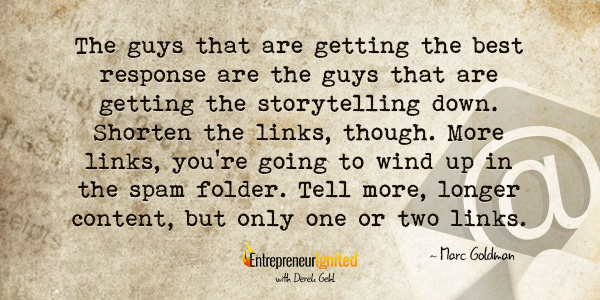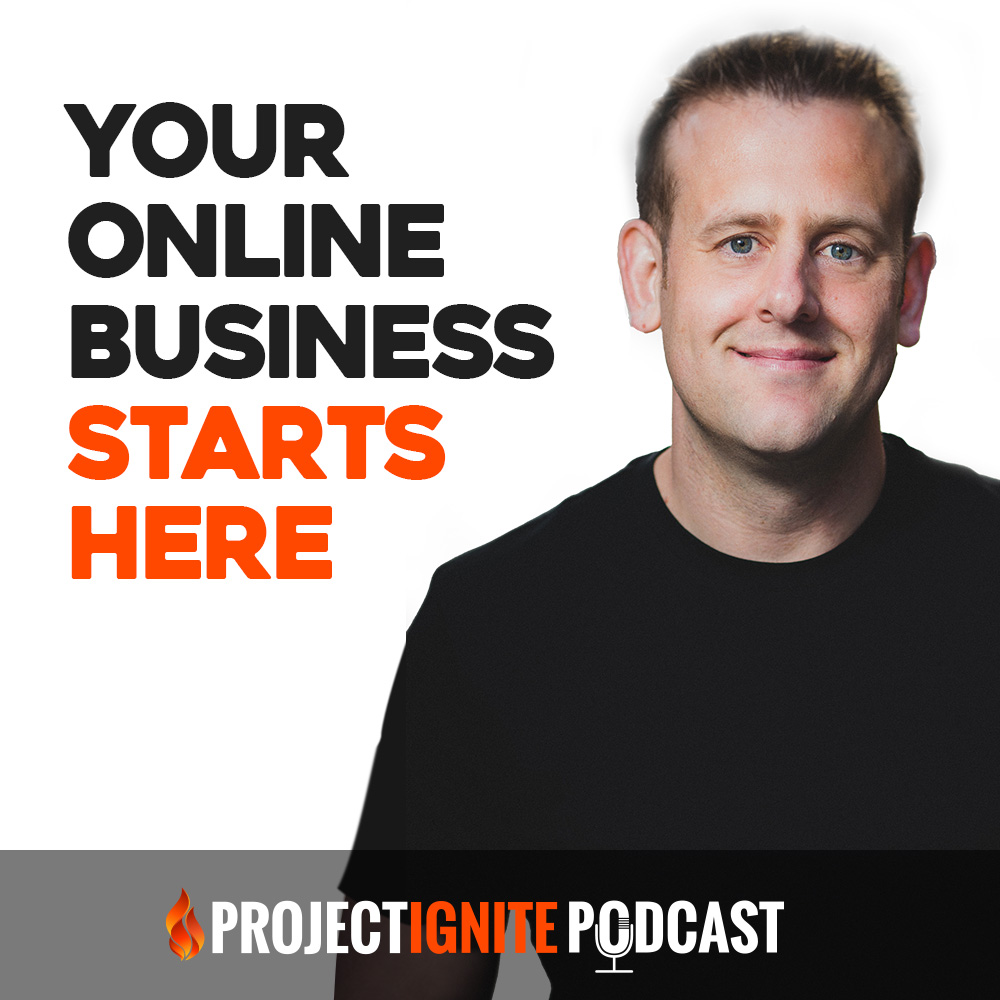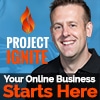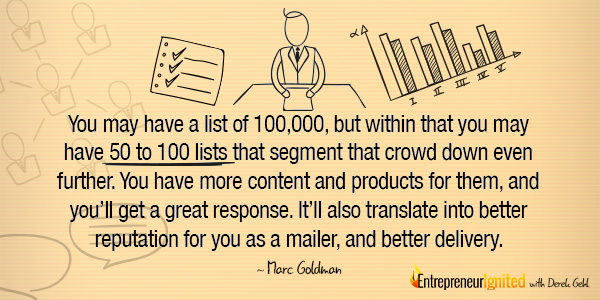Summary:
In this episode, email marketing expert Marc Goldman shares his email marketing tips & tricks. We talk about images, and what else you should have in your email, like the number of links and how long the body should be; and we get into exactly what will get ESPs to reward you as the sender for respecting their resources with your emails. Is your list segmented yet? Find out why it should be, in this episode of the Project Ignite podcast.
Links:
Find Marc at EM13.com.
Transcript: Email Marketing Tips & Tricks With Email Mastermind Marc Goldman
Welcome to the Project Ignite podcast–a podcast designed to skip the hype, skip the BS, and bring you real, actionable tips and strategies to help you grow your business and your income on the Internet.This is your host, Derek Gehl, and today we are going to be diving into a topic that I can’t get enough of: email marketing.
I’ve been in business online for a long time, and I can tell you that there is serious truth in the saying “the money is in the list.”
Over the past 15 years, I’ve watched countless marketers who have predicted the downfall of email with the rise of social media, but here we are, and email is still the most powerful and profitable tool available to us today.
In order to take your email marketing to the next level, today’s guest is going to be sharing his email marketing tips & tricks from 19 years of experience. He’s an authority that has recently taken his two decades of experience in email marketing and turned it into a platform made for high volume marketers to get the most out of every email and today he has promised to share his best email marketing tips!
Without further ado, I’d like to welcome Marc Goldman to the show.
Sure, happy to. Around 1995, I was just about graduating college, and was just getting started in business. My wife–who was not my wife at the time, of course–and I were working together and we always knew that we wanted to work together, so we spent a lot of time at Barnes and Noble leafing through the back of all of these business magazines, trying to pick something that we wanted to do.
We actually became resellers of a product that was teaching people how to get started in direct mail marketing. We bought a package that said all you had to do was run some ads, drive people to a voicemail script, use that voicemail script to get people to raise their hands, get a sales letter to them, and if they were interested, they’d send you some money.
It sounded like pie in the sky, because we’d been trying all kinds of things for the past year. All kinds of rubbish, a lot of $39.95 money orders. But this thing actually worked. We were doing everything offline, though. We’d place ads in penny savers, and we’d get people to raise their hand, send them sales letters, and they’d send us money back in the mail.
All this time, though, I was still working my full time job as a network engineer. I had a degree in psychology but I was in the computer field.
I said to myself, if we could just lower our expenses–I was talking to other direct marketers and they were saying that breaking even, which is what we were doing, is pretty darn good. So in 1996 we ran an ad on AOL classifieds, which unfortunately you can’t do anymore. But it was $13 for this ad, and it started on a Sunday, and it would run from Sunday to Sunday, starting at 11AM. At around noon, we got our first sale. $13 investment, $97 sale.
I think we made $800 off that one ad. So we kind of threw away the voicemail, and decided to be online entrepreneurs. That’s what started it.
I’ve also had one foot in tech and one foot in the marketing world. It’s a unique perspective because most people are either one or the other, but I’m hardcore in both. I’m starting to get to the point of teaching myself programming.
I leverage all of my network engineering skills to build servers for the company, all that. But I can still get down and dirty with ROI, lifetime value, all of that. I’ve always lived in both worlds and it’s kind of my sweet spot.
For years we were doing that, and then we turned our business into a software company through strategic alliances, and joint ventures, which I became really good at. We taught that for years, and wondered if we’d continue with software or if we’d move into information products.
We kind of had both for awhile, but years of doing business with our ecommerce platform called Goldbar One for many years. We had a lot of customers come to us and say “I like what you’ve got, I’m good with the shopping cart, I’m good with the affiliate software, what I really need is somebody who is a marketer like me that can help me deliver this huge list that I’ve got.”
That’s kind of been my life in marketing. Customers will tell you what they want to buy, and if you don’t deliver it to them, someone else will. That’s always been my mantra, give the people what they want.
We weren’t advertising, I wasn’t trying to compete, I was very happy with the boutique company that we had. Our clients were happy, and they kept me paid by referring people. That was how I got to where I am today.
Now we’re about to show everyone what’s under the hood, with our next version, EM13. We’re going to be able to get high volume marketers the delivery that they should be getting.
I consider us a hybrid. You have your ESP with a shared pool, and they have their free trials. Then you have Aweber, which is a little bit more geared towards people that are only in email marketing. Then you have MailChimp and ConstantContact which is more for small businesses with less online marketing savvy.
I don’t like that model. I feel that people get better results from leveraging their own domains and IPs. Exacttarget is more what we look for. I give people the service, make it easy, but you don’t use a pool of IPs, it’s all your own dedicated space.
Interesting, so it’s kind of a GetResponse front end, but with the Enterprise features of better IPs and delivery.
There has been a void in the market!
I did see that void a few years ago that you either had to be an expert or a guy that put your whole life in the hands of the ESP. But we’ve all heard the horror stories of being kicked off and not knowing why.
When you cross the line into that hardcore spammer territory, I get it, but I really don’t support that draconian kind of model when its people that are just making genuine mistakes and can be taught to market better and keep the ESPs happy.
Most people just trying to do business online just make mistakes!
Totally agree. So we could take this in a hundred different directions, but let’s start with those mistakes. One of the reasons I love talking to people like you is that you get visibility into all sorts of different mailers in different markets. You have a deeper insight into what works.
What are the top three or five mistakes that you see people making with email marketing today?
The number one mistake that people are making is not segmenting their emails. All that means is dividing up their list into smaller groups and categories into qualified groups. We were marketing to people and saying “this may not be for you! Get in touch and we can find out.”
For those of you who it’s not appropriate for, maybe we have something better for you. You need to take that approach with your email marketing, too. People just blast emails out to everyone. The money is in the tightly focused segment of the list. What you’re selling to one person may not be appropriate for the rest of the people on your list.
You can start simply. Are you emailing only to the people that are opening and clicking on your emails? Those are your engaged customers. The lowest common denominators are the openers. Then there’s the clickers. They go to the website that you lead them to, and then that is outside of the mailer’s responsibility.
But then there’s a third segment. People ignore this bunch. These are the non-openers. You have to understand that when you’re dealing with providers like Gmail, Outlook, Hotmail, Yahoo. I bet 80% of your list is with one of those services. THey may not like you emailing to non-openers.
They want you to respect their resources. It costs them money to deliver those emails. They want you to only email to people that will open. Some people took that really seriously, and said, get rid of the non-openers! I have to admit, I was guilty of that a few years ago. But that’s a valuable segment!
Don’t throw out the baby with the bathwater, right? If you segment out the non-openers, and begin mailing them or trying to build a relationship with them, then you can get the chance to convert that group into openers and clickers.
This takes me to the second mistake: everyone should be segmenting into those three groups, but what if someone clicks a specific link? Do you then move them out of your main list and put them in a secondary list?
Let’s say I sell Air Jordans, and I want to find out who’s interested in the classic Jordan’s. I send out an email, selling classic ‘85 Jordan’s–those people that click that specific link, they should go in their own list. Then you know exactly what makes that person tick, and you can continue sending them those emails, with related products. You’ve gathered more information about that person. It’s always about learning more about people on your list. You do that through segmenting and advanced segmenting. You should be building list niches.
You may have a list of 100,000, but within that you may have 50 to 100 lists that segment that crowd down even further. You have more content and products for them, and you’ll get a great response. It’ll also translate into better reputation for you as a mailer, and better delivery.
Those are the two biggest mistakes. The third mistake, this is critical–they don’t mail enough. There’s no frequency. It’s all over the place, totally inconsistent. That frequency matters. If you had a dog, they thrive on consistency, right? They make judgements on you and on your relationship based on consistency. By giving them that structure, they know what to expect and that makes them calm.
Gmail, Yahoo, and Microsoft, will also know what to expect from you via frequency. People talk about warming up IPs. You have to mail a little bit at a time, and increase it day by day, until the ESPs know what to expect.
I personally believe with warming up, and I’ve tested this, it’s more about your frequency that anything else. You could start with 100,000, if you’re with a good platform, and it’ll have rates that control how much email is sent for you.
Ben Suttle is a famous marketer, and is famous for teaching people how to mail every day. He emails every single day. His people know that they’re going to get an email from him every day. That is predictable, and comfortable. Does that make sense?
I kind of agree with you. I might ramp up if I have a launch coming up or something. But I’ll tell you before hand, and I’ll reward you after. Free content or webinars or something like that to let them know that you appreciate them.
I think it’s more important to be consistent with your style. When you change it, that’s when you create cognitive dissonance. That’s when people expect something, but don’t get it, and their brains get a little confused. As marketers listening to this podcast, that’s the worst thing you can do. You want your people to get exactly what they’re expecting.
If they don’t get what they’re expecting, you need to let them know and explain.
I do agree that daily can sometimes push it. There are businesses that I consult for that work with that model perfectly. Matter of fact, if you look at big corporations, I see their email style, and it’s pretty well every day. There’s not a ton of content in there, either.
Whatever your list expects, if you deliver that regularly, they will be happy. So will the ESPs. As long as you stick with it, you’re fine. I’ve seen amazing marketers that will email sometimes ten times a day leading up to the launch. I expect that their bills skyrocket during that period. Complaints must shoot through the roof. It’s not the fault of the recipient, it’s the fault of the sender.
If I get multiple emails in a day, that’s too much. I take myself off the list.
It’s interesting. I was reading up on the NFL and they’re mailing on a daily basis. But they have so much data on their subscribers, that they’re sending emails with 200 points of customisation in those emails. You could mail daily.
Exactly. That goes back to mistake number two, advanced segmenting. You just interviewed Chris Lang, who’s just coming on board with us, and I’ve known him a long time. One thing he and I have talked about a lot is identity.
Once you know those little bits of data like the NFL does, you can tail your emails to those specific interests to be more personal. What big corporations like Nordstrom could do better is survey their subscribers on their preferences, and delivery emails that are tailored to people. Your open rate would skyrocket.
If the message to the market is a match, you’re going to get buyers way more than if you follow a scammer’s model. You leverage quality instead of quantity.
A few hundred thousand is our low end customer. That kind of person is concerned with ROI. They’re spending a lot on their mail, and on their other business expenses, it’s a large investment. And I don’t mean to alienate people that are not playing at that level yet. That kind of person is usually interested in mailing out really aggressive emails to get the click..
Even though they’re working with me, not all of my clients listen to me. So they send stuff out, and I’ve seen the tricky click kind of thing, like a controversial subject line, or walking the fine line of compliance. They’ll send far shorter emails, even though I’m quite the storyteller. I think the more you tell, the more you sell. I know you get that.
The people that are really getting the most interaction are not necessarily the short ones, it’s the longer emails with stories to tell that have more to them. That’s not to say every long email isn’t selling something. But you should be entertaining in every email that you send. You’re going to get opens, reads, clicks, and purchases.
The guys that are getting the best response are the guys that are getting the storytelling down. Shorten the links, though. More links, you’re going to wind up in the spam folder. Tell more, longer content, but only one or two links.

I don’t mean email gibberish, really tell a story. Tell people something. Gmail might see you as something to say to their customers. ESPs are measuring how long people spend on your emails. They claim that they want to protect their customer’s inboxes, but they use it to advertise too.
Those ads put dollars in their pockets. The longer you read, the more chance you have to be presented with an ad that you might click. ESPs will reward the sender for keeping people on that email. Longer emails will benefit you several-fold. I’ve seen that across the board.
Interesting! I’ve definitely seen the sway to shorter emails that are just after the click. But when I get a longer email with entertainment value, I spend more time with it.
So when you’re presenting that longer email, what is your formatting standard? More specifically, your width? I’ve been watching and trying to determine which is the best width. I see marketers with 50 characters on one line before they break, or marketers that let text run all the way across a page before they break.
This is an old school thing that I’ve been playing with. For those that don’t know what Derek is talking about, this pertains to counting across the line of text, each character, including spaces. I’ve always been stuck on 60.
I think this is because of our friend and mentor, Corey Rudl. Corey taught that many years ago–type out sixty characters, and use it as a ruler. I like that approach. I think it looks more natural. It’s also best for mobile readers. If you’re going into fancy HTML, I would hire a web designer who can build you a responsive template so it will look the same across every platform.
I think it’s more important to see how well the email will look in as many mail clients as possible. That’s really important. If you use HTML, you need a responsive template. Because most people are on mobile, now!
Most people are opening on iPhones, Outlook, and Gmail. I’ll talk to Internet marketers all the time, and everyone assumes that Gmail has 60% to 70% of each list. But there are niches where Yahoo and AOL is their bread and butter.
So the guys on Microsoft, you’ll find that there are niches where guys are only interested in selling CPA offers, and they focus on one specific ESP. So we’ve had to get really good at figuring out what delivery looks like for each ESP.
You have to make sure you have really clean HTML, and if you’re not going to do HTML, you need to copy and paste your text into TextEdit, clear the format, and then send that out. It’ll be the cleanest HTML you can send out–it keeps your emails very light, and will be appreciated by the ESPs.
Yes, you can’t assume that the rules are the same everywhere in the world.
I have one more question. What is your position in using images in emails?
I’m fine with it as long as it’s not abusive. Everything you add to an email adds to its filesize. The more images you add, the bigger the email gets. If you’re adding images, good HTML code is super important. So a lot of people have images turned off by default. If you wind up in the spam folder, you’ll want to A) include a link to tell people to turn images on, because that gets you straight out of the spam folder. You also want to use ALT tags. ALT tags are the HTML way of saying what the image was trying to say in the email if they don’t display.
So if you have a picture of Mickey Mouse in your email, and someone doesn’t see it, you might lose half the battle if your intent was depending on this picture of Mickey Mouse. So you say, ALT Text, picture of Mickey Mouse. Then people know what you’re wanting to say.
You could even make your text, “turn on your images, because you’re missing this!” To get people to turn them on.
I’m good with images, as long as it’s relevant to the email. Don’t use style sheets. They’re a waste of time. They never render properly. Just use simple HTML. It’s one of the best things that a marketer could learn for themselves. HTML is becoming a lost art.
The level of HTML you need to put together an email is basic.
I have so many more questions for you, this is too bad. But we have to wrap this up. Where can our listeners find out more about you?
I’ve seen this gap in the market for such a long time. Your minimum price winds up being $25 grand if you don’t want to share IPs. I appreciate that and commend you for that project.
Thank you so much for sharing all of your knowledge, tips and strategies!
Oh definitely. I have so many more questions.
Alright everyone, that was email marketing expert Marc Goldman. As usual, all of the links will be included in our show notes along with the transcript of this episode. You can find that over at ProjectIgnite.com/podcast.
Of course, if you haven’t done so already, you can subscribe to this podcast to make sure that you never miss an episode. Find me on iTunes by searching Project Ignite, Derek Gehl, or Internet Marketing. You can do that on Androids as well, just do it on Soundcloud.
Also, please leave a review, tell us what you think. That’s what gives me the motivation to keep creating this information packed podcast for digital entrepreneurs. If you want some more tips and tools, check out our weekly profit report newsletter over at ProjectIgnite.com.
Now it’s time to take the tips, tools, and strategies that we’ve learned here today, and apply the final essential ingredient to make this all work for you: that ingredient is taking action. Go forth, take action, and stay tuned for more info-packed episodes of the Project Ignite podcast–a podcast designed to simplify online business so you can make more money.
This is Derek Gehl, signing off.
















These tips and tricks for email marketing are great. Much thanks for giving us this information. Are these also effective for small businesses?